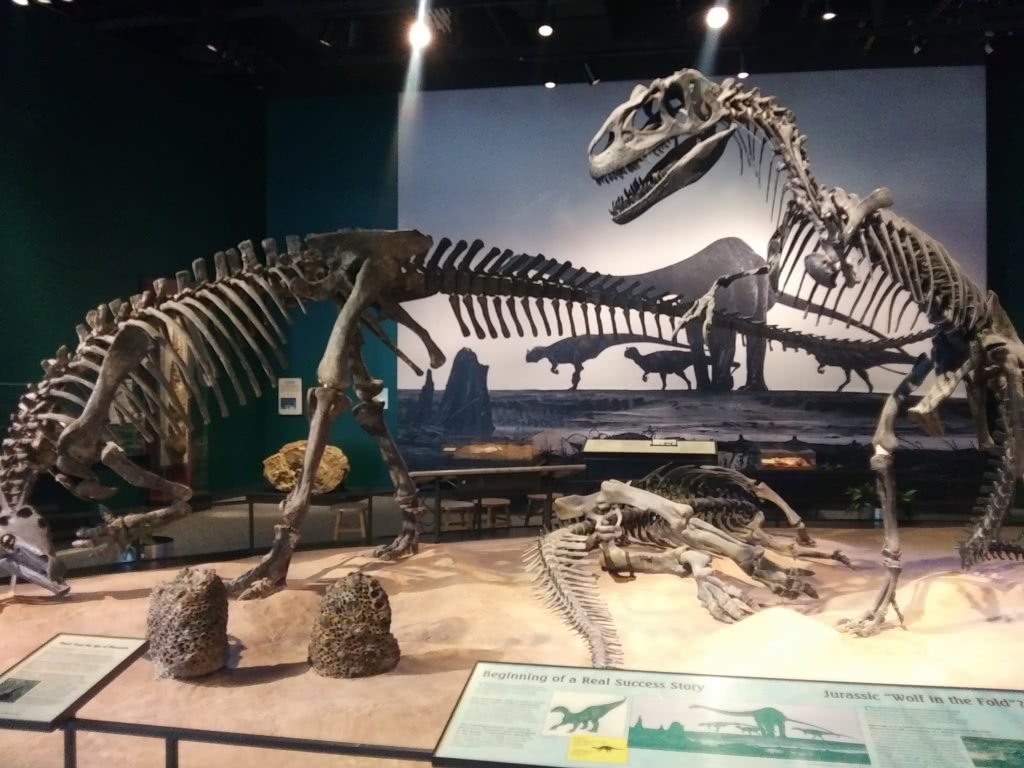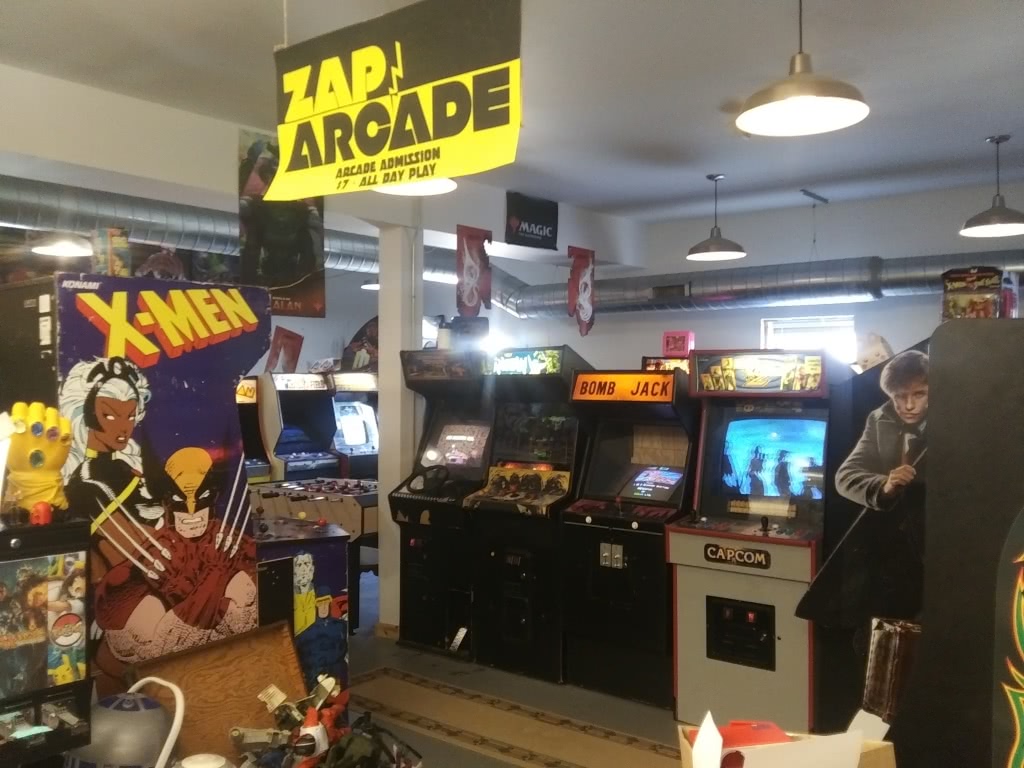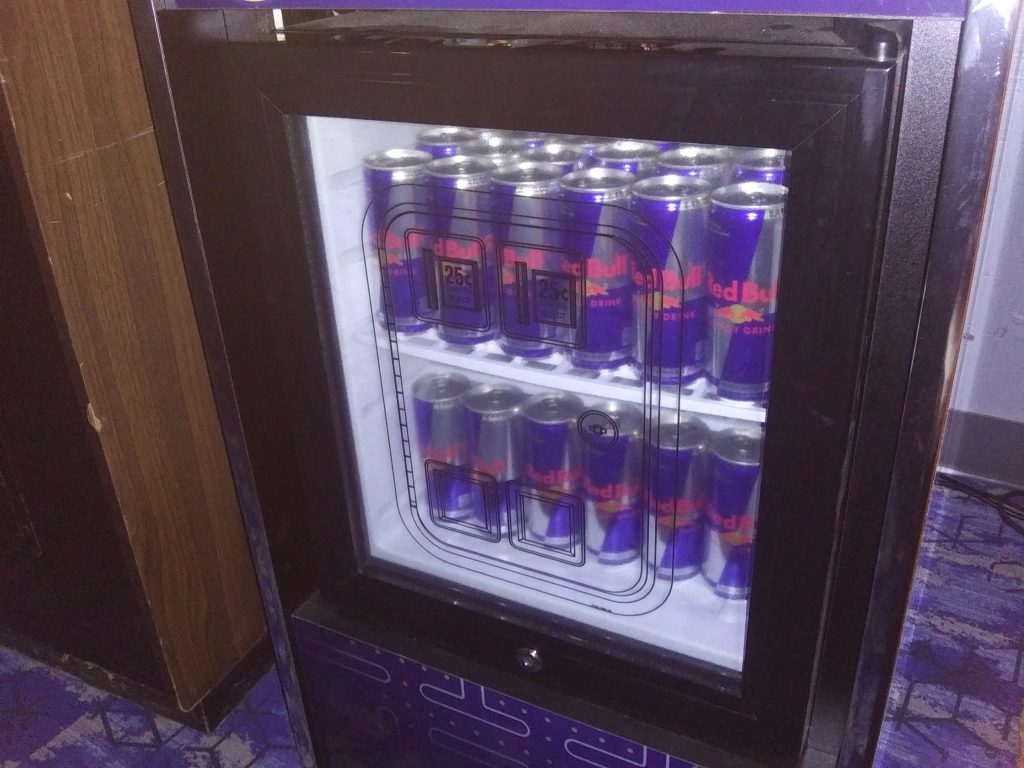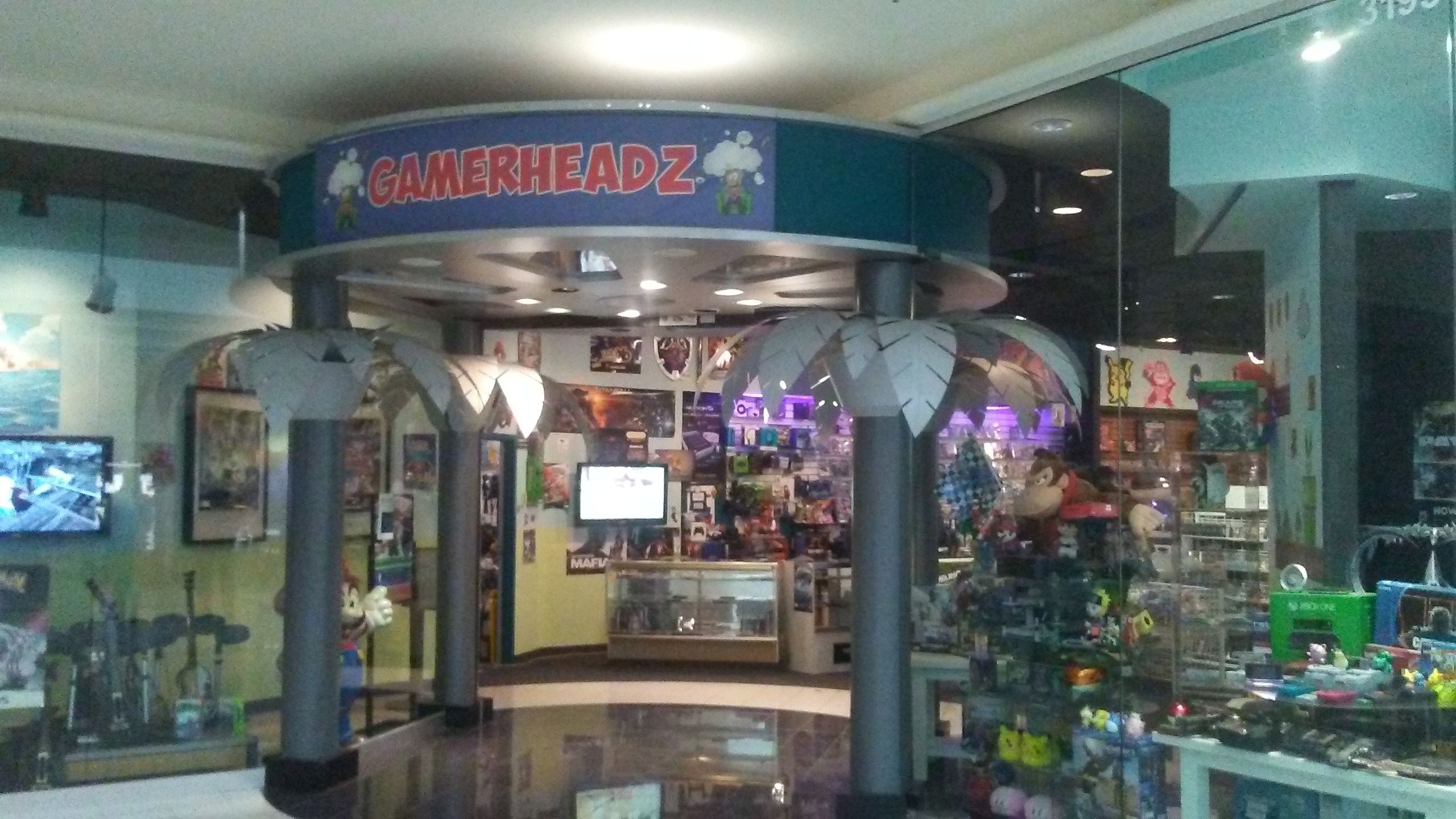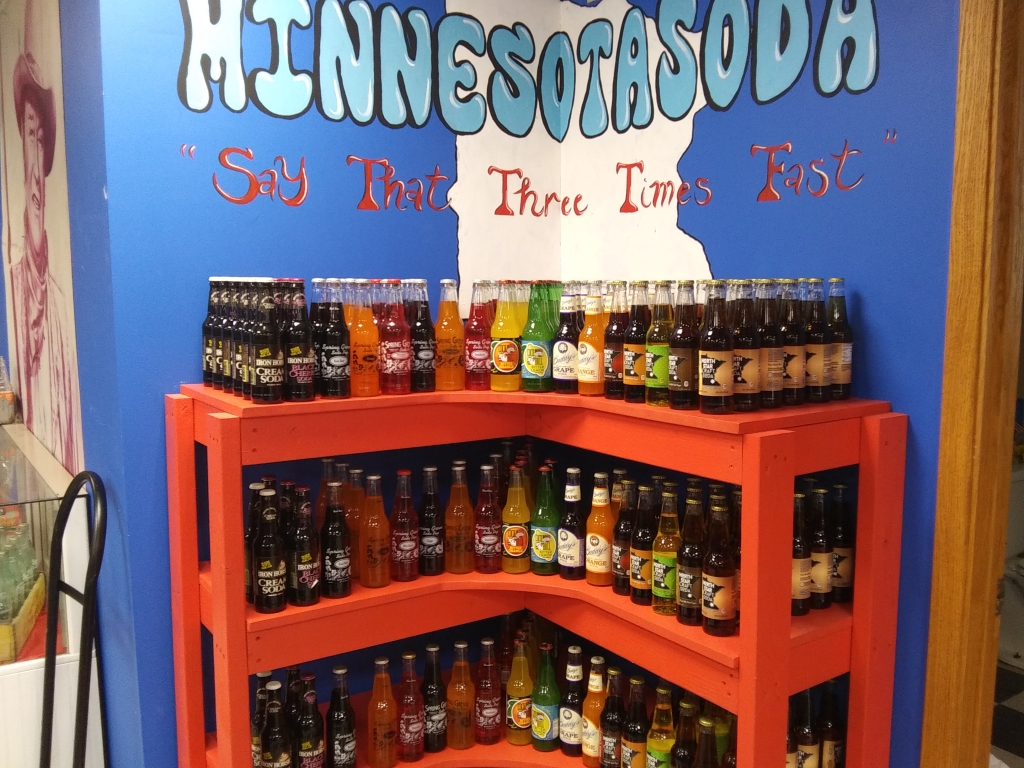
Oh man, it’s been so long since I’ve done one of these without Tom around. I’ve still got quite a bit more to write about Chicago, but I needed a break. This one blog post we wrote took us four days to write, and I just haven’t had the energy to format it. It doesn’t help that we’ve been dealing with a Minnesota winter. See this eight inches of snow? Yeah.

Today we’re going to the Science Museum of Minnesota. This place is right on the edge of Downtown St Paul, a place we visited once before many years ago. It’s arcade-related, I assure you.

On TV, you always see museums keeping their dinosaur bones and art pieces in the same building. Here in Minnesota, and I assume most places outside of major cities, the science and art museums are entirely different. I live like three blocks away from the art museum. This is my first time having a reason to come to the science one, though.

The Science Museum of Minnesota has four floors of exhibits. The building is strangely situated on a riverside hill, so the main entrance is on the top floor, and the back entrance is on the bottom. Here we see a giant astronaut that spans all four floors. His helmet is a giant screen that can display museum-goers’ faces from a nearby camera. Neat.

Here’s a full tugboat they keep on the roof and integrated into the building as an exhibit. You can enter the boat and walk around. Since I have nothing to say about this, let me use this opportunity to point out that I got a new phone recently, so the photo quality is much better than in the past. This also poses a problem since I’m slowly running out of image storage on this blog. I might have to go back and compress my older photos…

Most of the exhibits here at the museum are fun interactive things for younger kids. Here’s one where you can race against a bear on the back screen. To learn about kinetic energy, I guess? I came early in the day, so there wouldn’t be too many kids around, only to find out there were two schools here on a field trip. Oh well.

Before we get into the meat of the article, we gotta see the dinosaur bones, you know? Sadly, these are all reproductions. When people go to the museum, they expect to see giant T-rex skeletons, and there aren’t enough authentic ones to go around.

This one’s real, though.

Anyhow, the real reason I came out today is because of an exhibit a friend of mine texted me about a few weeks ago. Usually, I’d have run over the next day, but then we dropped into negative degrees again, and my plans were delayed. I’m so glad I made an effort to see it. I wasn’t expecting much, but I was blown away by what they had on display.

This is Game Changers, an interactive exhibit showcasing the evolution of electronic games and the names that made them happen. It’s impossible to capture in a single image, but this was a BIG exhibit spanning several themed rooms. The first one is the Arcade Heroes section, dedicated to the pioneers from the earliest days of gaming. I like how dark they kept this area to make it feel more arcade-like than the others.
Also, understand that I’m an arcade explorer, not a historian. Apologies in advance if I get any information wrong here. Most of these games are a bit too old for me to run into regularly, so I haven’t researched a lot of them in-depth.

Most displays have two games from the showcased creator with his name lit above the machines and a biography to the side. This one belongs to Ed Logg, creator of Centipede and Asteroids, along with some non-featured games like Super Breakout and Gauntlet. Asteroids is the game that single-handedly put Atari on the map back in the day, during a period when Space Invaders had a monopoly on the local arcades.

Speaking of Space Invaders, here’s Tomohiro Nishikado’s display. The guy is notable for being the first Japanese developer ever to gain any amount of notoriety overseas. In fact, his first game, Speed Race, was the very first Japanese video game ever brought overseas. The game they have on display here is Gun Fight, the great, great grand daddy of multiplayer shooters. In this game, two players awkwardly shuffle cowboys around the screen and shoot at each other. Apparently, this game is the first time a gun ever appeared in a video game and is sometimes cited as the first example of video game violence.
EDIT: While researching the history of computers the other day, I discovered Gun Fight is a much, much better deal than the marquee was making it out to be. This is the first arcade game, and by extension, the first publicly available thing to use a microprocessor. It’s a significant milestone in the development of computers.
The other game there needs no introduction. It’s Space Invaders, the game that single-handedly ushered in the golden age of video games. This game is the reason 80s-style arcades came into existence in the first place.

You can’t see it from this angle, but this is two displays: One to Tim Skelly and one around the corner to Toru Iwatani (you can see Pac-man in the back there). Iwatani is best known for Pac-man and Pole Position, but the other game they had sitting under his name is far more obscure. That’s Gee Bee, Iwatani’s very first arcade game. According to the display, Iwatani wanted to make pinball machines but somehow ended up in video game programming. You can see the pinball influence on Gee Bee, a bizarre Arkanoid knock-off with a much more vertical mentality. Two years later, Gee Bee was entirely overshadowed by Pac-man.
Tim Skelly is one you might not be familiar with unless you’re an arcade historian. Like most developers from this era, he faded into obscurity around the time consoles became more prominent. Tim Skelly was all but gone from the public consciousness by the time vector graphics became obsolete and didn’t leave behind anything on the level of Space Invaders or Pac-man (although he was on the staff of Sonic 2, of all things). The two games they have on display here are probably the two he’s most well-known for. The first is Reactor, a strange vector game where little enemies keep mindlessly ramming into a nuclear reactor as it slowly grows bigger and bigger. You can’t shoot these things, so you have to body slam into them and hope they hit a wall and explode. The other is Rip-off, the very first co-op multiplayer game. In this one, a bunch of mostly harmless enemies will run to the center of the map to try to steal your shit, and you have to blow them up before they can. The most unique thing about this game is that there’s no lives system and almost immediate respawn, so you can keep going until all your shit gets stolen. Kamikazing the enemies is quite an effective strategy.

Next up is Eugene Jarvis, one of the very few creators from this era who are still extremely prominent today. The game on the left is Defender, a game that rivals Pac-man in popularity back in the day. Every side-scrolling ship shooter, Gradius, Life Force, and whatnot, are clones of this game. The other is Robotron 2084, a top-down shooter that borrows Gun Fight’s dual-stick control setup. Both of these games were big, big deals when they were released in the early 80s, but generally aren’t as remembered today as titles like Space Invaders or Pac-man.
And as for Eugene Jarvis? He later went on to work for Midway Games and made the Cruis’n series. When they shut down, he founded his own company, Raw Thrills, and currently has a stranglehold on the US arcade market. He went places.

This section is for Shigeru Miyamoto of Nintendo. His is the only display in the arcade room with only one game. Spoiler warning: There isn’t a single other Nintendo game anywhere in this entire exhibit. This entire Game Changers exhibit was originally hosted at a museum in Australia back in 2012, with the exact same lineup of arcade games. Notably, they had a lot more Nintendo console games. I think there were some licensing issue in the states…

This one is Dave Theurer or Missile Command and Tempest fame. This is ironic, considering his most significant contribution to the industry is a game called “I, Robot,” the first game to use full 3D polygons instead of wireframes. There’s not much else to say about him since these are the only three games of note he really made. This era had a LOT of one or two-hit wonders.

Masanobu Endo is one you probably haven’t heard of if you’re American, but he’s one of the most well-known creators from this era in Japan. The game on the right is Xevious, widely considered the first modern curtain shooter. On the left is The Tower of Druaga, a wildly popular game in Japan but relatively obscure stateside. The fact that most of the google results for the game are about the anime based on its sequel should attest to that fact (I’m not even sure if the arcade version got a US release). If I said Zelda and Dragon Quest were both inspired by this game, would you understand what a big deal it was? Granted, the game itself sucks. It involves slowly wandering through a maze to get to a door.

These two are just credited under their company names. Left is Scramble; right is Elevator Action. Scramble is a prequel of sorts to the Gradius series, while Elevator Action has a cult following and a few sequels in Japan.

With the arcade section behind us, we get into the second part of the exhibit: the console and PC era. This place is dedicated to the major players in the post-arcade era of gaming. Unfortunately, I don’t know much about console gaming, so most of these names are greek to me. This room was Blizzard Entertainment and TT Games. Even I know the former, while the latter seems to be behind the Lego video games. What an odd choice. I think those PCs had a World of Warcraft thing running.

This room is where most console-era stuff was kept, full of names and games I don’t recognize. You can tell just by this photo that it had a much different ascetic than the arcade area. It felt less “dingy arcade” and more “gamers are hip,” which is appropriate. Let’s take a look around.
By the way, I lied about no Nintendo games in the exhibit besides Donkey Kong. A Wii was running Epic Mickey in Warren Specter’s section to the left. That was the only exception.

Whoever put this exhibit together were huge Sega fans, since the console area had a disproportionate amount of Sega games on the floor. Unfortunately, they were all running emulated on Xbox 360s and PS2s instead of the original hardware.

In particular, Yuji Naka and Sonic Team took up a huge space in the middle of the floor. Every one of the standing poles you see here had a Sonic game attached, with everything from the original to Sonic Generations. There was some definite favoritism going on here.

…Yu Suzuki? What the hell are you doing in the console section!? Look, your display is even full of arcade games!
Seriously though, when I didn’t see Yu Suzuki in the arcade area, I was afraid they would disregard him because he was at his most prominent in a much later era than what people think of when they hear “arcade games.” It’s no exaggeration to say he’s one of the most important arcade developers ever. He’s the man who almost single-handedly pioneered 3D video games as we know them today. There’s not a single 3D video game released today that doesn’t use something innovated in one of his games. He was a BIG deal.

I couldn’t believe what they had in it. I’ve been searching for a full-size Out-Run machine for years, but this is the first time I’ve seen one in person. To think I’d finally find one at a museum of all places.

I talk about these machines more in that lengthy blog post that hasn’t gone up yet. Still, Yu Suzuki’s AM2 team made four full-size arcade machines, one after another, that put them on the map and gave them the reputation needed to do the 3D innovation they’d later become known for. Those four were Hang-on, OutRun, After Burner, and Space Harrier. Finally, playing OutRun as it was meant to be played was a dream come true.

Speaking of Hang-On, it’s Sega AM2’s very first machine! This is probably the rarest of the four due to how much abuse the motorcycle tends to take. Nowadays, nearly every arcade has a clone of this game, but this was the original that made “motorcycle game” a staple of every arcade. This is the first time I’ve ever gotten to play it in any form. It’s extremely obvious to me now that OutRun was very heavily based on this game.
This was, by far, the most popular game with kids at the arcade. Of course, this game is also so tough that it leads to many kids screaming about how impossible it is. This game needs to be played on the original hardware to understand what a precise balancing act it requires to turn.

Shouldn’t this be Virtua Racing instead? Oh well. This is the original Virtua Fighter, a game I’ve talked about quite a few times. This series brought fighting games into 3D like Virtua Racing did for racing games and Virtua Cop did for shooting games. Unfortunately, even by fighting game standards, it was extremely difficult, so Tekken quickly eclipsed it in the west.

They also had Shenmue 2. I can’t imagine kids nowadays appreciating how revolutionary this game was at the time. It’s also not particularly fun, especially if you can only play for two minutes. I guess they had to have this here to justify putting Yu Suzuki in the console section.

I don’t know who Peter Molyneux is, but the British chap on Youtube hates him. Fable is the only game he’s made that I’ve even heard of.

These are the original design notes used during the production of The Sims. I was hoping they’d have more stuff like this, but this is the most interesting thing. There was also a bunch of Disney stuff in the Warren Specter display that had very little to do with Epic Mickey.

Tetsuya Mizuguchi, the creator of Rez, Sega Rally, and Space Channel Five, got a disproportionately large section dedicated to him. I have to wonder how they chose who would feature in this section. There are hundreds of influential game developers, so why did a bunch of Sega guys and Warren Specter end up as some of the most prominently featured? The original Australian version of the exhibit is pretty much the same lineup, except with Nintendo, Kojima, and Tim Schafer mixed in. That’s still a pretty random mix of developers. Or maybe I’m just crazy, and these guys are the ten most prominent developers ever.

You have no idea how often people ask me if I’ve ever found DDR at a museum. I’m not even joking. If you go to an anime convention and start talking about looking for DDR machines, someone will inevitably make the joke (thanks, Yu-gi-oh Abridged). Part of me was hoping they’d have DDR here so I could finally say, “yes, I have.” I guess I’ll have to settle for, “No, but I’ve been to one that had Dance Central 3”.

There were also two semi-soundproof rooms in the back for Rock Band and Sing Star. I think this is where they threw out any pretense about honoring the evolution of the medium and wanted to have Rock Band and Sing Star.

The third and final section was dedicated to indie games.

As you can see, this part of the exhibit had a very “made in the garage” wooden look to it. Do I have to give indie games the time or day, or can I move on? I can? Great.
Also, Parappa the Rapper was in here for some reason.

With all that said and done, I left impressed with the arcade lineup and underwhelmed by everything else. But hell, I’m not going to complain when I finally found the deluxe version of both Hang-on and OutRun! Finding (working versions of) the four original AM2 games is one of my overarching goals on this blog.
When you first walk out of the exhibit, you’re greeted with an advertisement for the gift shop.

You also walk right into the race relations exhibit. I’m not going to end my blog post on this note. I think I’ll take my chances with the gift shop…

They sure have a lot of Nintendo stuff in the gift shop for an exhibit that couldn’t get the rights to have any Nintendo games on display. I was hoping they’d have a postcard exclusively for this exhibit I could grab, but it was all thestuff you could find at Barnes and Noble.

I bought a chunk of amethyst for 75 cents instead! What a steal!

